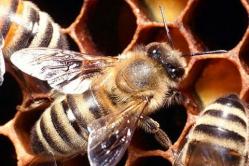Antipyretics for children are prescribed by a pediatrician. But there are emergency situations for fever when the child needs to be given medicine immediately. Then the parents take responsibility and use antipyretic drugs. What is allowed to give to infants? How can you bring down the temperature in older children? What medicines are the safest?
TV is convenient: I put the child in front of a flickering box and gained a few free minutes for myself. But the baby, looking at TV, is not having fun, at this time his brain is working hard. Everything that he sees on the screen, he perceives as true, realistic, because of the impossibility, due to age, to think critically. The purpose of good animation is to teach something useful. For the most responsible parents, we have compiled a list of cartoons recognized by psychologists, neurologists and the parents themselves as dangerous for the mental health of children.
Masha and the Bear
Plot: a restless girl Masha falls on the head of a retired circus bear, who, like a magnet, attracts trouble. A cartoon with nice graphics, qualitatively drawn, children adore it. But what children love is not always good for them. Masha is a hyperactive child with a clear attention deficit, impudent, ill-mannered, selfish. He indulges, has fun, naughty, stands on his ears. The bear humbly endures her antics, almost does not punish and dreams of being left alone. Danger: the message of the cartoon is “break all the rules of decency, behave as you please, you will be forgiven for everything.” This does not contribute to obedience in any way, and removes the child’s internal taboos on bad deeds. The series is controversial, it is recommended to watch in the presence of parents, accompanied by detailed explanations of why it is impossible to act like Masha. Winx Club - Fairy School
 Plot: six magical girls study at the school of fairies, are actively involved in their personal lives, while at the same time fighting against the dark forces.
Danger: the heroines are spectacular young ladies: huge eyes, slender long legs, wide hips, a narrow waist, loose hair and catchy sexy clothes. By the way, designers Dolce and Gabbana worked on creating images. False standards of beauty are laid in the subcortex of a little girl, with the ensuing inferiority complex: the reflection in the mirror will never reach the ideal image. Traditionally female qualities - modesty, chastity, mercy - are frankly ridiculed in this cartoon, and a model of the world where female power reigns is offered instead. Sorceresses themselves can stand up for themselves, be rude or surrender. The child develops erroneous understandings of female and male behavior. The animated series is imbued with the idea: “I want a bright, easy life without effort and labor.” Possessing superpowers that are not related to the level of intelligence, fairies do not bother themselves even with small work, flying mini-helpers do it for them. Monster High
Plot: six magical girls study at the school of fairies, are actively involved in their personal lives, while at the same time fighting against the dark forces.
Danger: the heroines are spectacular young ladies: huge eyes, slender long legs, wide hips, a narrow waist, loose hair and catchy sexy clothes. By the way, designers Dolce and Gabbana worked on creating images. False standards of beauty are laid in the subcortex of a little girl, with the ensuing inferiority complex: the reflection in the mirror will never reach the ideal image. Traditionally female qualities - modesty, chastity, mercy - are frankly ridiculed in this cartoon, and a model of the world where female power reigns is offered instead. Sorceresses themselves can stand up for themselves, be rude or surrender. The child develops erroneous understandings of female and male behavior. The animated series is imbued with the idea: “I want a bright, easy life without effort and labor.” Possessing superpowers that are not related to the level of intelligence, fairies do not bother themselves even with small work, flying mini-helpers do it for them. Monster High
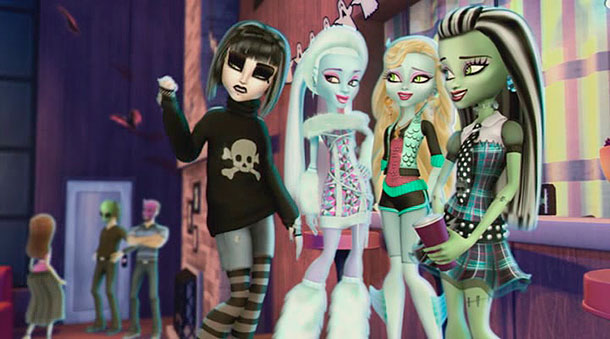 Plot: Vampires, zombies, mutants, werewolves and other teenage monsters study in the same school. The idea was commendable - to collect the heroes of legends and myths from different countries in one multi-story, but the execution failed. Animation that cuts the eye, stupid jokes, slang speech - they do not increase vocabulary in any way and do not enrich with new knowledge. From series to series, the characters despise studying (not studying is great), discussing clothes, guys, appearance. Such concepts as respect for adults, family values, friendship, concepts of beauty are trivialized. Danger: a standard is laid in the child's psyche - good things should be beautiful, cute, negative characters - on the contrary. If all the characters are equally ugly, terrible, the child has no guidelines for who is bad, who is good, who does the right thing, and who does it badly. Plus, when a child is forced to imitate a terrible hero, the child's sense of self suffers. In children, the fear of death is dulled, as one of the strongest deterrent barriers that help to avoid danger. On the contrary, in "Monsters" the cult of death and the glamor of the afterlife are actively sung. Sponge Bob Square Pants
Plot: Vampires, zombies, mutants, werewolves and other teenage monsters study in the same school. The idea was commendable - to collect the heroes of legends and myths from different countries in one multi-story, but the execution failed. Animation that cuts the eye, stupid jokes, slang speech - they do not increase vocabulary in any way and do not enrich with new knowledge. From series to series, the characters despise studying (not studying is great), discussing clothes, guys, appearance. Such concepts as respect for adults, family values, friendship, concepts of beauty are trivialized. Danger: a standard is laid in the child's psyche - good things should be beautiful, cute, negative characters - on the contrary. If all the characters are equally ugly, terrible, the child has no guidelines for who is bad, who is good, who does the right thing, and who does it badly. Plus, when a child is forced to imitate a terrible hero, the child's sense of self suffers. In children, the fear of death is dulled, as one of the strongest deterrent barriers that help to avoid danger. On the contrary, in "Monsters" the cult of death and the glamor of the afterlife are actively sung. Sponge Bob Square Pants
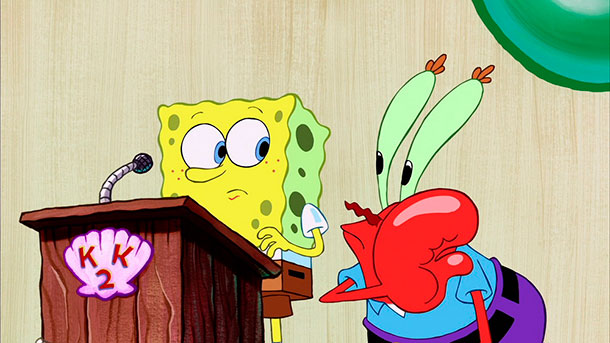 Plot: A sea sponge works as a cook in a restaurant. He is fond of hunting for jellyfish, karate, blowing soap bubbles. Differs in extreme degree of naivety, optimism. SpongeBob and his friend Patrick put various objects in their ears and noses, call each other “stupid”, “idiot”, beat them in the head with a sledgehammer in turn, eat inedible things (lanterns, for example). All this is mixed with primitive humor about the adult world, “How to become an adult: puff out your chest, say “income tax”, and now take on a meaningful look.” And this world seems to them unattractive, incomprehensible, requires hard monotonous work. Danger: the cartoon smells of frightening degradation and dullness, while impressionable children can rush to repeat cartoon experiments in practice. Bob's veiled morality - and why grow up at all - threatens to grow up a generation of infantile people. Barboskins
Plot: A sea sponge works as a cook in a restaurant. He is fond of hunting for jellyfish, karate, blowing soap bubbles. Differs in extreme degree of naivety, optimism. SpongeBob and his friend Patrick put various objects in their ears and noses, call each other “stupid”, “idiot”, beat them in the head with a sledgehammer in turn, eat inedible things (lanterns, for example). All this is mixed with primitive humor about the adult world, “How to become an adult: puff out your chest, say “income tax”, and now take on a meaningful look.” And this world seems to them unattractive, incomprehensible, requires hard monotonous work. Danger: the cartoon smells of frightening degradation and dullness, while impressionable children can rush to repeat cartoon experiments in practice. Bob's veiled morality - and why grow up at all - threatens to grow up a generation of infantile people. Barboskins
 Plot: five puppies try to get along with each other, solving their problems on their own. A clearly unhealthy family model is shown, where parents are busy with themselves and appear when they need to scold someone or buy something. Children are not friends, on the contrary, they are not averse to making fun of each other, teasing, snitching, dirty tricks and name-calling Danger: bickering between brothers and sisters, intrigues are not the best example for resolving conflicts. Plus, the animated series is stuffed with hackneyed stereotypes: a dumb beauty, a nerd, a narrow-minded athlete, a child without special talents. Tom and Jerry
Plot: five puppies try to get along with each other, solving their problems on their own. A clearly unhealthy family model is shown, where parents are busy with themselves and appear when they need to scold someone or buy something. Children are not friends, on the contrary, they are not averse to making fun of each other, teasing, snitching, dirty tricks and name-calling Danger: bickering between brothers and sisters, intrigues are not the best example for resolving conflicts. Plus, the animated series is stuffed with hackneyed stereotypes: a dumb beauty, a nerd, a narrow-minded athlete, a child without special talents. Tom and Jerry
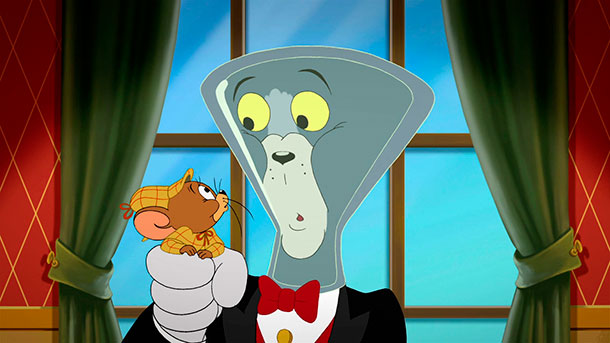 Plot: the cat is trying to catch the mouse, and he himself suffers from this throughout the series.
Danger: aggressiveness. The episodes regularly show scenes of violence, cruelty, and bad habits. Neither the cat nor the mouse are responsible for their bullying. (An alternative is the Soviet cartoon “Leopold the Cat”, where nasty mice fall into their own traps). transformers
Plot: the cat is trying to catch the mouse, and he himself suffers from this throughout the series.
Danger: aggressiveness. The episodes regularly show scenes of violence, cruelty, and bad habits. Neither the cat nor the mouse are responsible for their bullying. (An alternative is the Soviet cartoon “Leopold the Cat”, where nasty mice fall into their own traps). transformers
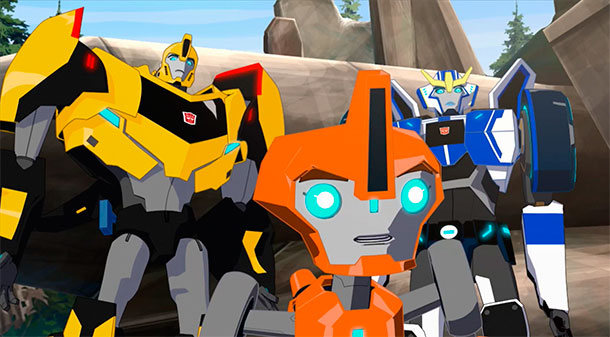 Plot: Protracted war of robots. It is difficult for a child to understand intricacies; anger and irritation accumulate from prolonged viewing. Danger: robots surpass humans in intelligence and abilities, the kid sincerely admires invincible and omnipotent heroes, suppressing his own “I”, lowering his self-esteem. He easily gets used to the thrill of watching aggressive scenes, and after that, calm and kind cartoons seem boring and insipid to him. All kinds of anime (Pokemon, Sailor Moon, Naruto)
Plot: Protracted war of robots. It is difficult for a child to understand intricacies; anger and irritation accumulate from prolonged viewing. Danger: robots surpass humans in intelligence and abilities, the kid sincerely admires invincible and omnipotent heroes, suppressing his own “I”, lowering his self-esteem. He easily gets used to the thrill of watching aggressive scenes, and after that, calm and kind cartoons seem boring and insipid to him. All kinds of anime (Pokemon, Sailor Moon, Naruto)
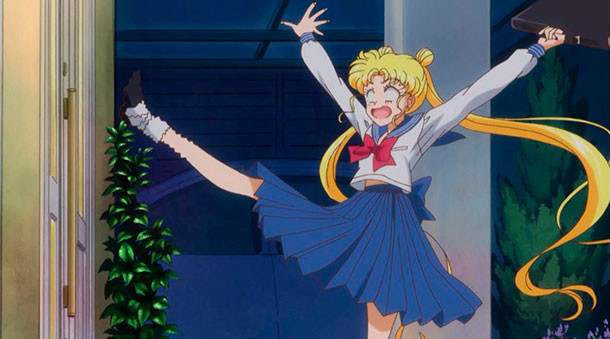 The child loves everything bright and catchy, his attention is riveted from and to (example with advertising), he, as if spellbound, is ready to stare at the screen for days, poorly capturing the essence of what is happening. Danger: bright colors, computer graphics that do not convey real facial expressions - and it is difficult for the baby to realize what feelings the hero is experiencing. The appearance of the characters is also embarrassing: unnaturally large eyes, unreal images of the mouth and nose, incorrect body proportions break the child's concept of how a normal person should look like. Poisonous colors, flickering provoke excessive excitement, and a chaotic video sequence can lead to logoneurosis (speech disorders), since information does not have time to be absorbed. It is worth warning against watching “Pokemon” especially impressionable children prone to imitation. There have been cases when children, like Pokémon, jumped from a height, from windows, the tricks they tried to repeat were accompanied by serious injuries.
The child loves everything bright and catchy, his attention is riveted from and to (example with advertising), he, as if spellbound, is ready to stare at the screen for days, poorly capturing the essence of what is happening. Danger: bright colors, computer graphics that do not convey real facial expressions - and it is difficult for the baby to realize what feelings the hero is experiencing. The appearance of the characters is also embarrassing: unnaturally large eyes, unreal images of the mouth and nose, incorrect body proportions break the child's concept of how a normal person should look like. Poisonous colors, flickering provoke excessive excitement, and a chaotic video sequence can lead to logoneurosis (speech disorders), since information does not have time to be absorbed. It is worth warning against watching “Pokemon” especially impressionable children prone to imitation. There have been cases when children, like Pokémon, jumped from a height, from windows, the tricks they tried to repeat were accompanied by serious injuries.
“Pick up those cartoons where the characters are beautiful and kind, courageous, brave. Let the kid copy good manners, tact and goodwill, let him hear and repeat the correct speech, smile and learn to be friends, and not try to be the first in everything, take revenge and get angry, funny frowning eyebrows, as most heroes of cartoons unnecessary for the child do, ”said Days.Ru child psychologist Tatyana Golubeva. The child tends to adopt what he sees. Toddlers are happy to imitate facial expressions and gestures, manners and behavior characteristic of cartoon characters. “When parents notice ugly grimaces, aggressive behavior, hear rude slang phrases and complain about it, you always want to say, change the cartoon repertoire,” the expert sums up.

